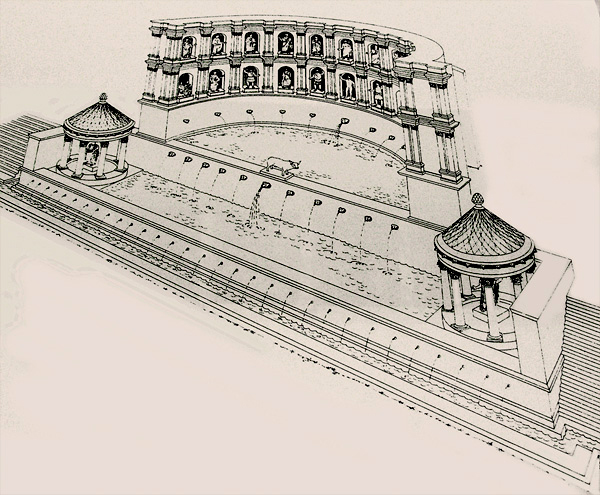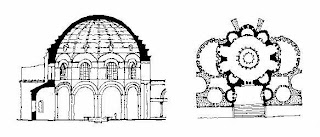18027, RE: Варианты Святой Софии
Послано guest, 20-07-2011 19:02
Alla scoperta della Hagia Sophia, parte II: cenni introduttivi alla storia della costruzione
Alla scoperta della Hagia Sophia, parte III: ipotesi sulla prima e seconda costruzione





L’Itinerario di Luigi Trezza (1795)
ossia il taccuino di viaggio di un architetto: città, territorio e infrastrutture
Laura Giacomini

Luigi Trezza, 1795. A sinistra: pianta del tempio di Minerva Medica (Roma, IV secolo d.C.); a destra: prospetto della facciata interna di Villa Giulia, particolare (Roma, Ammannati-Vignola, iniziata nel 1551) (BCVr, Ms. 856, p. 193 e p. 382).


Nymphaeum and its water source



Minerva Medica in Rome was built about 270 A.D.. This building formerly the Temple of the Goddess Minerva, is now generally regarded as the Nymphaeum of the Baths of Gallienus. It is an interesting building for two reasons - it is decagonal in plan but has a circular dome, with pendentives (1) and also each angle is buttressed externally which is unusual in Roman architecture. The dome was of concrete ribbed in tiles and large windows on each side of the decagon admitting light to the interior.
(1) A pendentive is an overhanging triangular section of vaulting between the rim of a dome and each adjacent pair of arches that support it.
|









